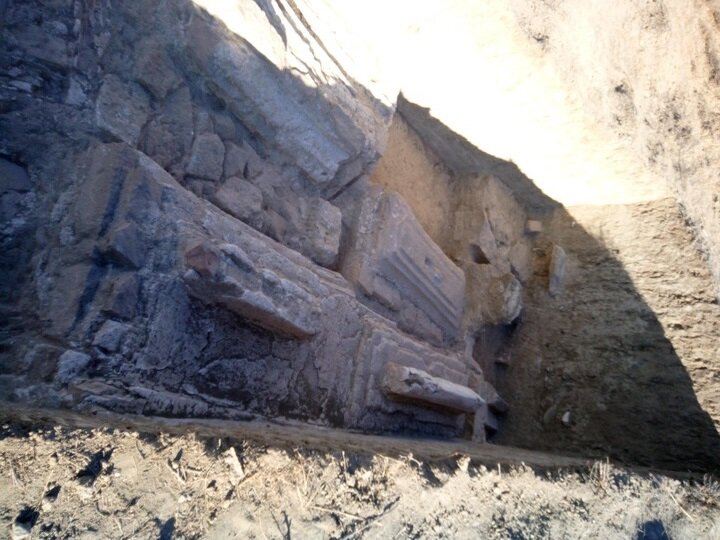Burial site, estimated to date from Ilkhanid era, unearthed in west-central Iran

TEHRAN – A team of archaeologists and cultural heritage experts has unearthed ancient ruins and remains of what they believe is related to a burial site most probably dating from the Ilkhanid era (1256-1335).
The discovery was made when a team led by Iranian archaeologist Shaghayegh Hourshid conducted salvage work at the reservoir of Marash Dam in Mahneshan county of Zanjan province.
According to the Research Institute of Cultural Heritage and Tourism, Hourshid has announced the discovery of four human burials on a plaster basis.
Evidence such as wooden remains, nails, and corroded metal fasteners suggests that these burials were placed within wooden coffins, the report said.
Moreover, initial evaluations and the distribution of surface ceramics led to the identification of the first foundation trench in the southeast of the site. Further excavation revealed an octagonal structure.
The head of the archaeological team highlighted that, in the center of the structure, at a depth of 130 centimeters from the floor, the skeletal remains of four human burials were exposed on a plaster floor.
So far, rescue excavations conducted in the Marash Dam reservoir have revealed 16 archaeological sites spanning various historical periods, including the Middle Paleolithic, Copper, Stone, the first millennium BC, Achaemenid, Sasanian, and early Islamic periods, the archaeologist explained.
She elaborated on the history of the rescue excavations, stating that after initial agreements between the Research Institute and the regional water company in Zanjan in the winter of 2014, the Marash Dam basin came under the supervision of [the archaeologist] Lalheh Abdikia.
“The primary goal was to identify and document the archaeological assets for preservation.”
Another rescue excavation in this area took place five years later, in the winter of 2019, in zone number six. The excavation, led by Hourshid, resulted in the documentation of seasonal settlement remains from the Achaemenid period.
Concluding her remarks, Hourshid stated that based on the ceramics, tiles, and mud bricks obtained from the archaeological excavations, it is suggested that the octagonal structure (possibly a tomb), the surrounding cemetery, and the two waste dumps related to the pottery kiln date back to the 7th to 9th centuries in the Islamic calendar, with a higher probability of belonging to the Ilkhanid period.
The Ilkhanid dynasty, also called Il-Khanid, was a Mongol dynasty that ruled Iran from 1256 to 1335. Il-Khan is Persian for “subordinate khan”.
Hulegu, a grandson of Genghis Khan, received orders from the supreme Mongol chieftain, Mongke, to conquer Iran. Hulegu set out around 1253 with a Mongol army of about 130,000 men. He founded the Il-Khanid dynasty in 1256 and conquered Baghdad and all of Iran by 1258, according to Britannica.
The Il-Khanids consolidated their position in Iran and unified the region as a political and territorial entity after several centuries of fragmented rule by small dynasties. During the reign of the Il-Khanid Maumud Ghuzun (r. 1295-1304), the Il-Khanids lost all contact with the remaining Mongol chiefs in China. Mahmud Ghuzun himself embraced Sunni Islam, and his reign was a time of Iranian cultural renaissance in Iran, with scholars such as Rashid al-Din flourishing under his patronage.
Ghazan’s brother Oljeitu (r. 1304-16) converted to Shia Islam in 1310. Oljeitu’s conversion caused great unrest, and when he died in 1316, civil war was imminent. His son and successor, Abu Sa’id (r. 1317-35), converted to Sunni Islam and was thus able to prevent a war.
During Abu Sa’id’s reign, however, factional disputes and internal unrest continued to spread. Abu Sa’id died without leaving an heir, and with his death, the unity of the dynasty was broken. Thereafter, various Il-Khanid princes ruled parts of the dynasty’s former territory until 1353.
AFM
